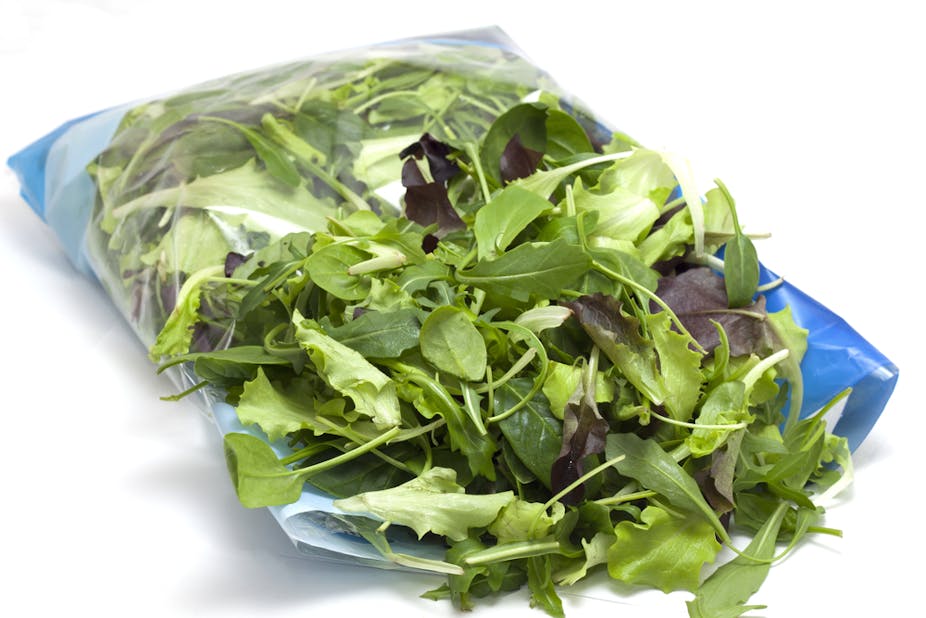When you hear the term “food poisoning” it usually conjures up images of hurried journeys to the toilet and rueful reviews while there of what was eaten the previous day. Most of the blame might be levelled at your meat main course – was the chicken undercooked or the steak too rare?
However, reports from the food safety community are increasingly suggesting we need to look elsewhere for the source of food poisoning outbreaks. Increasingly, suspicions are now that the side salad that garnished your suspect meat course may have contained more than just dietary fibre.
Research is showing that green leafy salads containing lettuce and spinach are subject to colonisation by food poisoning bacteria, most frequently Salmonella, E. coli and Listeria. In 2014, beansprouts contaminated with Salmonella infected more than 100 people in the US, a quarter of whom were hospitalised. In February 2016, more than 50 people in Victoria, Australia developed salmonellosis after eating bagged salad leaves, while in July 2016, 161 people fell ill in the UK after eating mixed salad leaves and two people died. The EU league table of sources of food poisoning outbreaks now ranks green salads as the second most common source of food-borne illness.
Sinister salad
Foods such as salad leaves pose a particular infection risk because they are usually minimally processed after harvesting and consumed raw. Consequently, it isn’t surprising that considerable research effort has been made into improving the microbial safety of salad leaf culture as well as optimising protocols for processing and packaging.
But outbreaks still occur with devastating consequences and thus far very little has been known about what happens to the behaviour of food poisoning bacteria when in the actual salad bag – until now.

In our latest study, we concentrated on Salmonella as it is an aggressive pathogen that has been implicated in salad-associated infections. We found that juices released from the cut-ends of the salad leaves enabled the Salmonella to grow in water, even when it was refrigerated – this was a surprise as Salmonella has a temperature preference of 37C.
Over the course of a five-day refrigeration – a typical storage time for a bagged salad – 100 Salmonella pathogens multiplied into more than 100,000 bacteria. Salad juices also helped the Salmonella to attach itself to the salad leaves so strongly that even vigorous water washing could not remove the bacteria. Salad leaf juice also enhanced the pathogen’s ability to attach to the plastic bags and containers used to contain salads for sale. Most concerning was that we found that exposure to the juices released from the salad leaves appeared to enhance the Salmonella’s capacity to establish an infection in the consumer.
Our project does not indicate any increased risk to eating leafy salads, but it does provide a better understanding of the factors contributing to salad-associated food poisoning risks and highlights the need for continued good practice in salad leaf production and preparation. Public Health England advises thorough washing of all salad leaves and other soil grown vegetables.
With regards to eating leafy salads, which are a nutritious part of the diet, they should be stored, prepared and used according to the guidance on the pack – including refrigeration and use-by instructions. Avoid bags of salad with mushed up leaves, avoid any bags or salad containers that look swollen, store in the fridge and use the salad as quickly as possible after purchase to minimise the growth of any pathogens that might be present.
It is not at all likely that you will become ill from eating salads, but they are consumed raw and so vigilance is needed.

